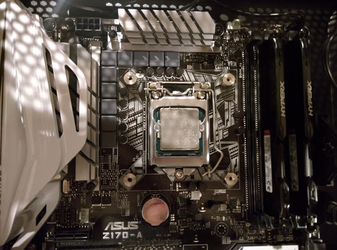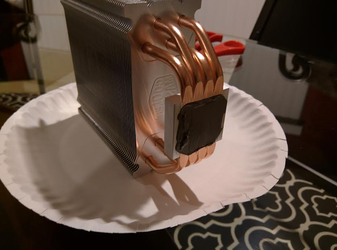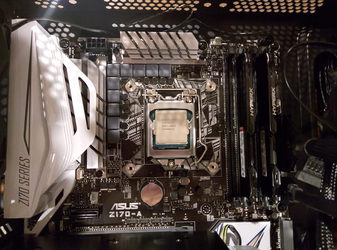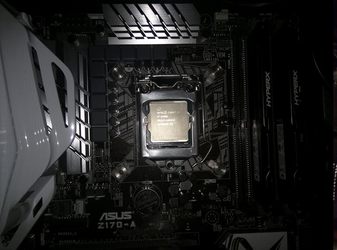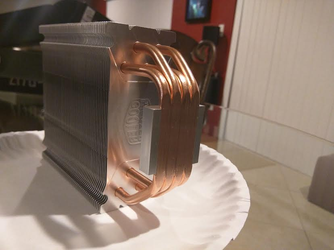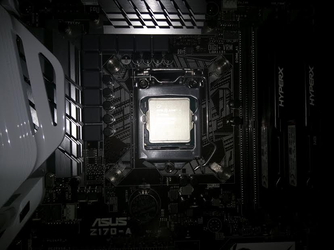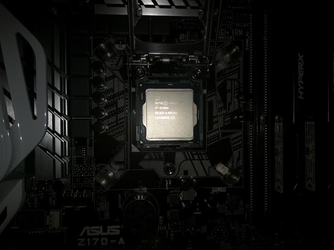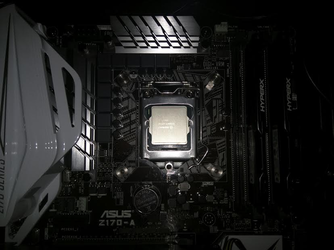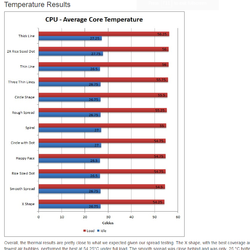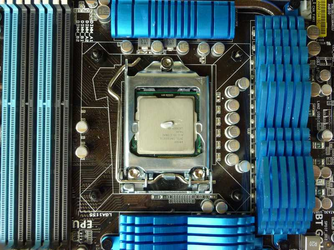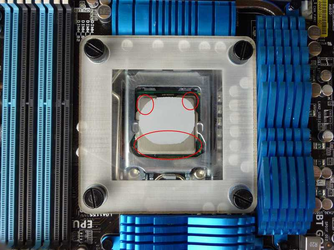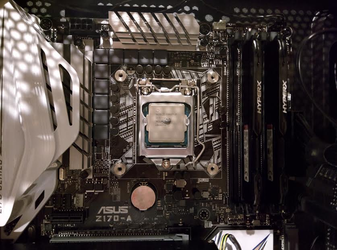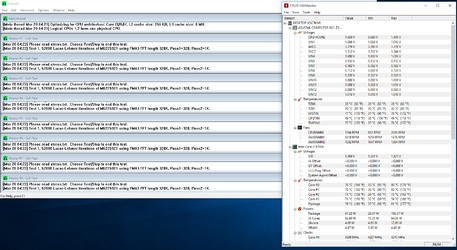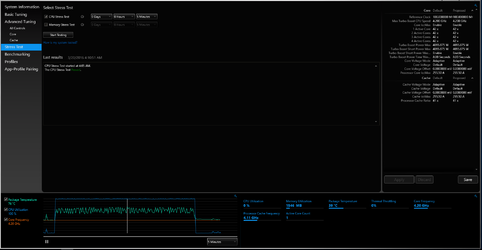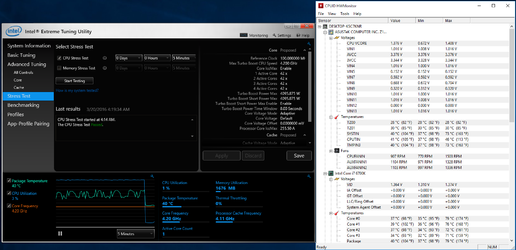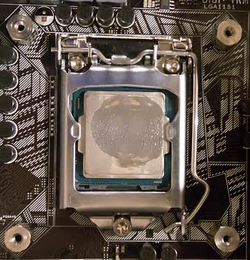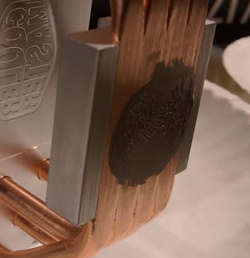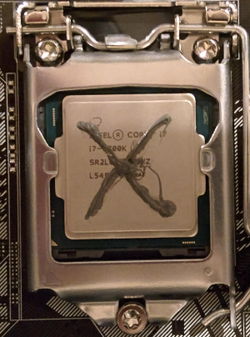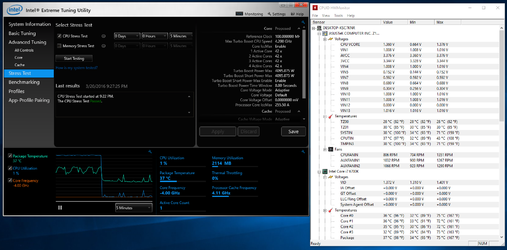Hey Everyone!!
Just built a machine with the following specs:
CPU: Intel Core i7-6700K 4.0GHz LGA 1151
MOBO: ASUS Z170-A ATX DDR4
RAM: Kingston HyperX FURY Black 16GB Kit (2x8GB) 2133MHz DDR4 Non-ECC CL14 DIMM
GPU: ASUS GeForce GTX 960 Overclocked 4GB GDDR5
HEATSINK: Cooler Master Hyper 212 EVO with 120mm PWM Fan
PASTE: Arctic Silver 5
SSD: Intel 480GB
HDD: WD Blue 1TB 7200 RPM HDD
DVD: ASUS 24X DVD/R/RW
PSU: EVGA SuperNOVA 650 G1 80+ GOLD, 650W Continuous Power, Fully Modular
CASE: Corsair Carbide Series 200R Compact ATX
Everything is stock configuration, no OCing at all.
I tried the X pattern for thermal paste for the first time, so I wanted to check the CPU temps after installations were done, and this is what I'm getting:
With Prime95 working, blend test:

With Prime95 stopped:

Those temperatures seem very high to me at load.. am I right to be concerned??
Any input is greatly appreciated!!
Just built a machine with the following specs:
CPU: Intel Core i7-6700K 4.0GHz LGA 1151
MOBO: ASUS Z170-A ATX DDR4
RAM: Kingston HyperX FURY Black 16GB Kit (2x8GB) 2133MHz DDR4 Non-ECC CL14 DIMM
GPU: ASUS GeForce GTX 960 Overclocked 4GB GDDR5
HEATSINK: Cooler Master Hyper 212 EVO with 120mm PWM Fan
PASTE: Arctic Silver 5
SSD: Intel 480GB
HDD: WD Blue 1TB 7200 RPM HDD
DVD: ASUS 24X DVD/R/RW
PSU: EVGA SuperNOVA 650 G1 80+ GOLD, 650W Continuous Power, Fully Modular
CASE: Corsair Carbide Series 200R Compact ATX
Everything is stock configuration, no OCing at all.
I tried the X pattern for thermal paste for the first time, so I wanted to check the CPU temps after installations were done, and this is what I'm getting:
With Prime95 working, blend test:
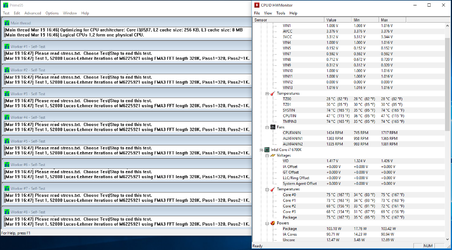
With Prime95 stopped:
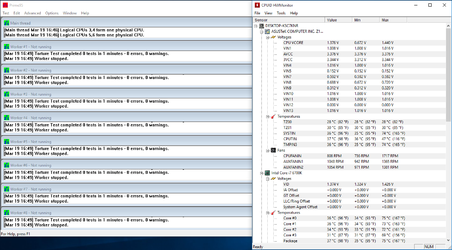
Those temperatures seem very high to me at load.. am I right to be concerned??
Any input is greatly appreciated!!
Last edited:
